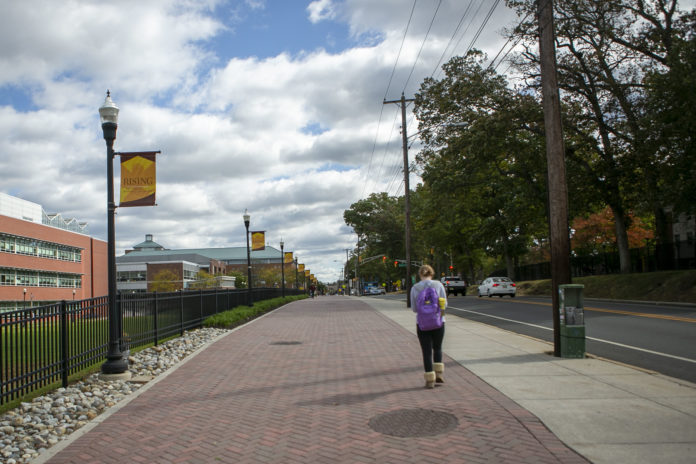In light of recent events, Rowan THRIVE has been mentioned often, thrown around like a game of catch. Despite the recent publicity the program has received, many in the community still don’t fully understand what THRIVE entails.
THRIVE is not a program, but an initiative that involves all areas of the Rowan community. It focuses on the six dimensions of well-being including physical, financial, community, social and emotional well-being. It strives to help students identify their motivation and purpose in life and the career field.
“We’ve been planning for a year-and-a-half a campus wide well-being initiative,” the director of campus recreation Kevin George said. “We want faculty and staff to have empathy and patience for students. We want to figure out how we can be there for the students, instead of them just being a number.”
This initiative is made possible by Rowan’s mental health committee. Rowan THRIVE proactively takes care of students, allowing them recognize the six dimensions in their well-being so they can make the necessary changes or lifestyle choices to better themselves. It’s goal is to create a supportive self-care network between the students and faculty members.
THRIVE replaces the Rowan passport program, a program which involved sending students to different locations on campus but seemed to struggle to effectively engage students to improve their well-being and was more about checking boxes and visiting locations. THRIVE strives to push students to engage with the services offered.
Although there are tweaks still being made to this pilot program to see if it should fully run in the classrooms in the fall semester, administrators believe THRIVE will be more effective at engaging students to work on their well-being.
“As part of the credits in the class the students would journal and reflect on the six dimensions,” George said. “The students would reflect on them and see which areas could be increased. They can revisit these goals and write about it.”
There are pre-packaged questions provided to professors and will be used mainly in freshman 101 courses and seminars. The journal entries will be private, so it is reliant on the students to engage with the material. These pre-packaged questions will be made available for all faculty members and it is up to the professor to see how and if they incorporate it into the class. The ultimate goal is to provide students with every resource they need to succeed.
“We want the students to feel supported and to take care of their well-being…to reflect on what works for them,” George said. “We want them to navigate their ups and downs, so when they graduate they have the tools.”
On the THRIVE website, it explains well-being as a whole and how it can impact a student’s life. The site also has six different interactive dimensions leading to the associated tools a student might need specifically about that dimension. The social and community page leads to a place where events are offered to help the students engage with others. This initiative will also bring other types of events, but they are still in the beginning stages of planning.
THRIVE is individual to each student, but there are events that can bring students together and go towards the social or community aspect of the dimensions.
“Life is like a hamster wheel,” George said. “Everyday you’re just trying to survive and having that mindset is not ideal because then you’re truly not thriving but you’re surviving.”
For comments/questions about this story, email news@thewhitonline.com or tweet @TheWhitOnline.





